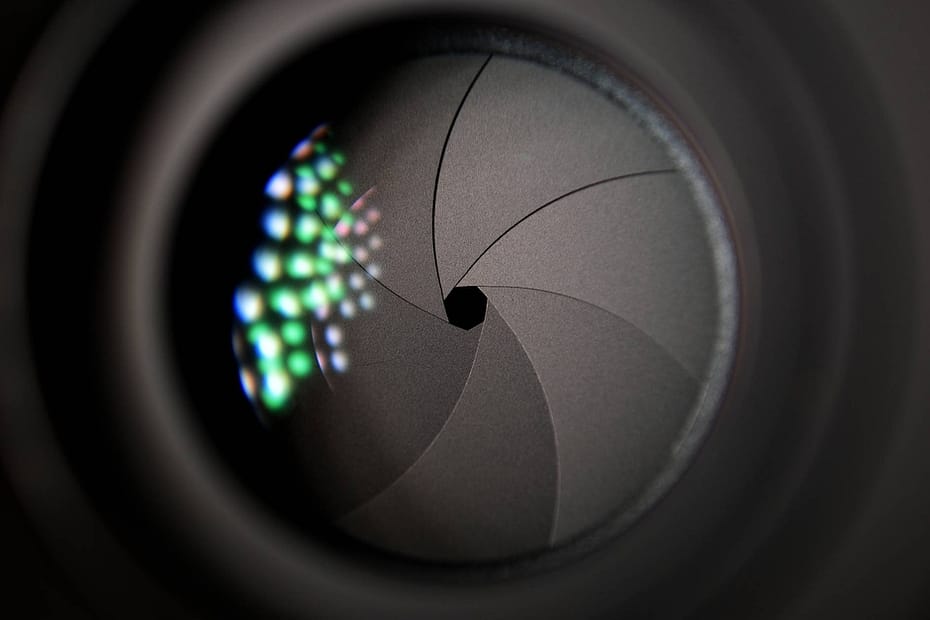In the olden days, taking photographs was an art form. For classic photographers such as Ansel Adams or Henri Cartier-Bresson, taking pictures required skill and excellent vision. Many photographers cannot understand using a camera that sees the image slightly different from what is displayed in the viewfinder or screen. Or, most importantly, using a camera that can only focus manually. Luckily, technology has eased the process of taking images by automating some of the tasks that used to require the photographers’ attention. One of these tasks is focusing.
With advancements in modern technology, the problems which come with manual focus have been all but eliminated. Modern cameras are equipped with a system that evaluates the scene, picks a point closest to the camera, and automatically brings the picture into focus. This is the magic of autofocus. But as with most technological advances, autofocus has made focusing complex and a source of headaches. Now, there are many camera focusing modes (not to be confused with shooting modes) to choose from, which has lead to misuse and poorly focused images. Let us simplify this seemingly complex task.
HOW A CAMERA FOCUS
Without getting too technical, the camera and lens combination work in the same way our eyes do. Our eyes have a lens that directs light rays to converge at a point in the back of the eye (retina). We see clearly when the light rays converge on the retina. Otherwise, when the rays converge in front of or behind the retina, our vision is blurry. The camera works the same way.

depends on what your are
shooting
Light reflected from the object enters the camera through the aperture (opening in the lens). The lens then directs the rays of light so they can converge on the sensor. When all the light rays converge, the image is in focus. The whirling noise you hear from the lens is the elements moving forward and backward, trying to bend light rays, so they converge on the sensor. In older cameras, the photographer made this adjustment manually, but modern cameras do it automatically.
Generally, focusing is either manual or automatic. But with advances in technology, automatic focusing has been further subdivided into single automatic and continuous automatic. Different cameras have different names for these modes, but they work in the same way. Let us start with manual focus.
Manual Focus
This is the traditional focusing method. As the name implies, getting the image into focus is physically done by hand. Every lens has a focusing ring around it. The ring adjusts the lens elements’ distance inside the lens so the incoming light rays can converge on the same spot. To focus the lens, the photographer looks at the image in the viewfinder and adjusts the lens focusing ring until the subject is focused. Focus can also be achieved by changing the distance between the subject and the lens. In either case, focusing is done manually by the photographer.
This method, though it can and does produced sharp images, is not very efficient. For one, it is time-consuming. It takes time to adjust the focusing ring and determine if the picture is in focus. This may lead to missed shots or missing focus, particularly for moving subjects.
Manual focus also relies too much on the photographer. Think of a photographer with poor eyesight. If the photographers’ vision is not accurate blurry images may pass as sharp and vice versa. This problem has somewhat been addressed in some cameras, which indicates when the image is in focus. To address these and other shortfalls of manual focusing camera manufactures, introduce automatic focusing.
Auto Focus
In this mode, the camera does all the focusing. The camera determines the subject’s distance to the lens using a built-in sensor/sensors. Based on this information, the camera calculates the placement of the lens elements. This information is relayed to the motor in the lens, which makes the adjustments. The whirling sound you hear from the lens when focusing is the motor moving the lens elements the points determined by the camera.
How does the camera determine the point to focus on?
In auto mode, the focus point can be determined in two ways. The photographer can pick a point, or the camera sets it automatically. As we mentioned above, when you look in your viewfinder, you see the camera’s predetermined focus points. The photographer can either move the subject to the focus point or move the camera focal selection point to one of the predetermined focus points. The automatic focus system will then bring this point into focus.
Alternatively, the camera will pick a spot by looking for a point of contrast or an object closest to the camera. More and more camera manufacturers are coming up with focus tracking technology to determine people’s faces or eyes and set focus on them. Once the camera locks on a point and the distance between the point and camera is is measured. A signal is then sent to the lens’ motor to adjust the lens elements accordingly. Unlike in manual focusing mode, all the photographer does is compose the image, click the shutter halfway, wait for the camera to focus, and then click the shutter to take the picture.

Nothing is without its own shortfalls. The effectiveness of autofocus depends on several factors. The number of focal points within the image area, the nature of the subject, whether it is stationary or moving, and how the camera reads the tonal variance in the image all affect autofocus. Hence the introduction of ‘specialty’ autofocus modes – continuous focus and single area focus.
I-Continuous Focus Mode
Depending on your camera manufacturer, the name of this mode will be different. For example, Canon calls this mode “AI Servo” while Nikon calls it “Continuous/AF-C” regardless they all work in the same way.
In this mode, the camera does not lock focus on one point. Instead, the camera continues to re-focuses every time the subject or the photographer moves. In other words, the camera detects the object’s movement and tries to keep it in focus as it shifts. Focusing is, therefore, ongoing as long as the shutter is held halfway.
II-Single Area Focus Mode
As with continuous focus mode, this mode’s name depends on the camera manufacturer, although they operate in the same way. Nikon cameras label this mode “AF-S.” In contrast, Canon calls it “One-Shot AF.” Other camera manufacturers use their own unique names as well. But no matter what it is referred to, it works by locking in focus on the selected point. Once you set a point for the camera to focus, it is locked on that point. This means that if the subject or the photographer moves, the camera will not refocus. Instead, the camera will maintain its focus at the initial point.
Tip: back button focus combines both single areas focus and continuous focus mode into one button. Focusing is removed from the shutter button and is assigned to the AFL lock button. By doing so, you can switch between the two focusing modes on the fly. In this case, when you press and let go, the AFL-lock button focusing is locked on the selected point (single point focus mode). If, on the other hand, you hold down the button, the camera will continue to focus and refocus until you let the button go (continuous focus mode). To use back, button focusing, check your camera manual, or simply google it!
How to choose the right mode
No one focusing mode is superior to the other. Every focusing method is useful in one scenario and less effective in the other. Which way you are going to choose therefore depends on what you are shooting.
A rule of thumb, manual focus is for precision. For example, in microphotography, you need manual focus to zero in on the area you want to be in sharp focus. Manual focus is also ideal in situations where autofocus fails to pick the right point of focus. Circumstances such as shooting through a wire fence can cause autofocus to fail. Low light or conditions where the focusing light is not adequate, manually focusing the lens will solve it.
Continuous focusing is ideal for moving subjects. Because focus is not locked, you can track your subject as it shifts. For example, when shooting action or kids, you need your cameras’ focus to ‘move’ with the activity hence the need for continuous focusing.
Finally, single focusing is ideal for stationary subjects. Because the subject is not moving, you can lock in focus on the area that must be in focus, recompose the image the way you want, and shot away. Because focus is locked, you can move the camera to recompose the picture without losing focus. This method is standard in portrait photography to keep eyes sharp. It is also useful in landscape photography to create photos that are sharp from front to back. In this case, focus is locked on the hyperfocal distance. The picture is then recomposed and taken.
Final Word
The many ways to focus can seem confusing and complicated. Still, once you know what each mode does, it becomes easy to apply them accordingly. Remember that manual focus is for precision, continuous for moving objects, and single-point for stationary objects. As is with all artistic endeavors, the mode you chose will ultimately depend on your artistic vision. Happy shooting!
- Adobe Firefly: Artificial Intelligence Revolution - April 4, 2023
- Why Lumina Neo Is Worth Buying - June 20, 2022
- Galaxy S22 Ultra: Camera Phone for Photographers - April 13, 2022

